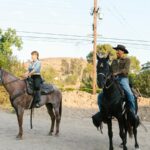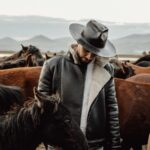Lunging—the practice of having a horse move in circles around a handler—represents one of the most versatile and valuable training tools available to equestrians. Far more than just a way to “burn off steam” before riding, proper lunging develops core strength, improves balance, and builds the foundation for advanced maneuvers under saddle. When implemented correctly, this groundwork exercise creates a physical and mental connection that transforms horses from simply being ridden to becoming truly balanced athletes. Whether you’re working with a young horse just beginning training or fine-tuning an experienced equine partner, understanding the nuances of effective lunging can revolutionize your training program and produce remarkable results in your horse’s overall development.
Understanding the Fundamentals of Lunging

Lunging involves having a horse move around the handler in a circle while responding to voice commands, body language, and light pressure from a lunge line. This groundwork technique requires minimal equipment—typically a lunge line, lunge whip, and appropriate headgear such as a cavesson or bridle. The fundamental purpose extends far beyond exercising a horse; it establishes respect, improves communication, and develops the horse’s body in preparation for mounted work. When done correctly, lunging creates a controlled environment where the horse learns to balance itself without the added complexity of carrying a rider, allowing it to develop proper muscling and body awareness independently.
Equipment Essentials for Effective Lunging

Selecting the right equipment dramatically impacts the quality and effectiveness of lunging sessions. A proper lunge cavesson provides control without interfering with the horse’s breathing or comfort, featuring three rings positioned at the nose for different directional influences. The lunge line, ideally 25-30 feet in length, should be made of lightweight yet durable material that won’t drag on the ground or burden the horse. A lunge whip serves as an extension of the handler’s body language, used primarily as a directional aid rather than for punishment or excessive driving. Additional equipment may include side reins, Vienna reins, or a chambon for specific training purposes, though these should only be introduced after the horse understands basic lunging principles and has developed sufficient strength.
Creating the Proper Lunging Environment

The ideal lunging space balances size with containment—providing enough room for the horse to move freely while maintaining a clear boundary. A round pen offers the perfect environment, typically 50-60 feet in diameter with walls that provide both physical and visual boundaries. If a round pen isn’t available, a fenced arena or paddock can work well, though handlers must be more attentive to maintaining the circle. The footing should be level, consistent, and not too deep or hard, protecting the horse’s joints while providing adequate traction. Environmental distractions should be minimized, especially when working with young or inexperienced horses, allowing for focus and productive training without unnecessary stress or anxiety.
Developing Core Strength Through Correct Movement

Proper lunging directly builds the horse’s core muscles, particularly those running along the topline and abdominal region that are critical for carrying a rider. As the horse moves in a circle, it must engage these muscles to maintain balance, effectively performing a continuous series of lateral exercises. This engagement strengthens the supportive muscles around the spine, creating a stronger “bridge” to carry weight. The benefits compound over time—stronger core muscles lead to improved posture, which in turn allows for better movement and further muscle development. Notably, these core muscles cannot be developed as effectively under saddle, making lunging an irreplaceable component of comprehensive physical training.
Improving Balance and Coordination

The circular movement inherent in lunging presents a natural challenge to the horse’s balance, requiring continuous adjustment and coordination. Moving on a circle forces the horse to engage its inside hind leg under its body while stretching the outside of its body, creating natural collection without rider interference. This self-carriage develops proprioception—the horse’s awareness of its body in space—leading to more coordinated movements under saddle. The balance improvements are particularly evident in horses that initially struggle with rushing or leaning, as they gradually learn to regulate their own movement and find equilibrium. As balance improves, handlers can reduce the circle size incrementally, further challenging and developing the horse’s coordination abilities.
Building Topline and Muscle Symmetry

One of lunging’s greatest benefits is its ability to develop a strong, well-defined topline—the muscles running from poll to tail that support proper carriage and movement. When a horse works in a balanced frame during lunging, it engages the muscles of its back, loin, and haunches in a coordinated pattern that builds strength and definition. Working equally in both directions addresses and prevents muscle asymmetry, creating balanced development that reduces the risk of compensatory movement patterns and subsequent lameness issues. The lifting and rounding of the back during properly executed lunging directly translates to improved carrying capacity under saddle, allowing the horse to lift and engage with a rider more effectively than one whose topline remains underdeveloped.
Developing Rhythm and Consistent Gaits

Lunging provides an unparalleled opportunity to establish and improve the quality and consistency of a horse’s natural gaits. Without the influence of a rider’s weight or aids, the horse can find its natural rhythm and cadence at each gait. The handler can observe movement from the ground, identifying irregularities or tension that might go unnoticed from the saddle. Through consistent work and gentle guidance, horses develop more even, measured strides with improved tracking and suspension. This rhythmic foundation becomes invaluable under saddle, as the horse has already internalized what balanced, consistent movement feels like before adding the complexity of carrying and responding to a rider.
Addressing and Correcting Movement Imbalances

Lunging serves as both diagnostic tool and corrective therapy for horses with movement imbalances or asymmetries. The handler can clearly observe if the horse consistently falls in with one shoulder, has difficulty bending in a particular direction, or shows unevenness in stride length. These observations allow for targeted interventions, such as adjusting the circle size, using ground poles, or incorporating transitions to address specific weaknesses. Lunging also reveals subtle lameness or discomfort that might be compensated for under saddle, allowing for earlier intervention. With consistent, thoughtful work, these imbalances gradually improve as the horse develops more symmetrical muscling and greater body awareness.
Mental Benefits of Structured Lunging

Beyond physical development, structured lunging sessions provide significant mental and emotional benefits for horses. The predictable routine and clear expectations help horses develop focus and attentiveness, qualities that transfer directly to under-saddle work. The controlled environment allows horses to process and overcome minor anxieties without the added stress of carrying a rider. Regular lunging establishes a working relationship based on clear communication and mutual respect, with the horse learning to respond to subtle cues from the handler. For many horses, particularly those with nervous dispositions, this groundwork creates a foundation of confidence and trust that positively influences all subsequent training.
Progression and Advanced Lunging Techniques

As horses develop strength and understanding, lunging can progress from basic circles to more advanced exercises that further enhance collection and engagement. Incorporating transitions between and within gaits challenges the horse’s balance and responsiveness while building carrying strength. Adding ground poles or small cavalletti introduces precision and careful footwork, developing proprioception and coordination. For advanced horses, spiral figures—gradually decreasing and increasing the circle size—build lateral flexibility and strengthen the inside hind leg. These progressive exercises continue developing the horse long after basic lunging is mastered, offering continued physical and mental challenges that translate to improved performance under saddle.
Common Lunging Mistakes and Their Consequences

Despite its benefits, improper lunging can create or worsen physical problems if executed incorrectly. Circles that are too small place excessive strain on joints and tendons, potentially leading to long-term lameness issues. Allowing a horse to move with its head and neck consistently high and hollow reinforces incorrect muscling patterns that work against proper carrying capacity. Over-lunging—working a horse too long or too intensely—can cause physical and mental fatigue that undermines training progress. Another common mistake is using side reins incorrectly or too early in training, forcing an artificial frame rather than allowing the horse to find balance naturally. Recognizing and avoiding these errors ensures lunging remains beneficial rather than detrimental to the horse’s development.
Integrating Lunging into a Complete Training Program

Lunging reaches its full potential when thoughtfully integrated into a comprehensive training program rather than used in isolation. For young horses, lunging might constitute a significant portion of early training, gradually decreasing as under-saddle work increases. For mature horses, regular lunging sessions—perhaps 1-3 times weekly—can maintain core strength and address specific training challenges between riding sessions. Many professional trainers incorporate brief lunging before riding to assess the horse’s physical and mental state, establishing focus and connection before mounting. The ideal balance varies widely based on the horse’s age, condition, and training goals, but consistent inclusion of quality lunging produces horses that are more physically capable and mentally prepared for all aspects of their work.
The Lunging-to-Riding Connection

The ultimate value of lunging lies in how effectively it translates to improved performance under saddle. A horse with developed core strength from lunging carries a rider with greater ease and comfort, maintaining balance without leaning on the bit or hollowing the back. The rhythm and self-carriage established during groundwork create a foundation for collection and engagement when ridden. Perhaps most importantly, the mental focus and responsiveness developed during lunging creates a horse that is more attentive and connected to its rider. Many trainers observe that horses with regular, quality lunging in their training program learn new concepts more quickly when ridden and show greater confidence in challenging situations, demonstrating the holistic benefits of this foundational practice.
Conclusion

Through proper lunging, horses develop into more balanced, stronger, and mentally prepared athletes. This foundational training technique builds the essential physical structure needed for carrying riders while establishing the mental framework for responsive, connected performance. Far from being just preliminary training or a way to expend excess energy, lunging represents a sophisticated training tool that continues benefiting horses throughout their careers. When implemented with knowledge, patience, and consistency, lunging transforms horses from the inside out, creating the strong core, balanced movement, and focused attention that characterize truly exceptional equine athletes. Whether you’re starting a young prospect or refining an experienced partner, quality lunging deserves a permanent place in your training program.







